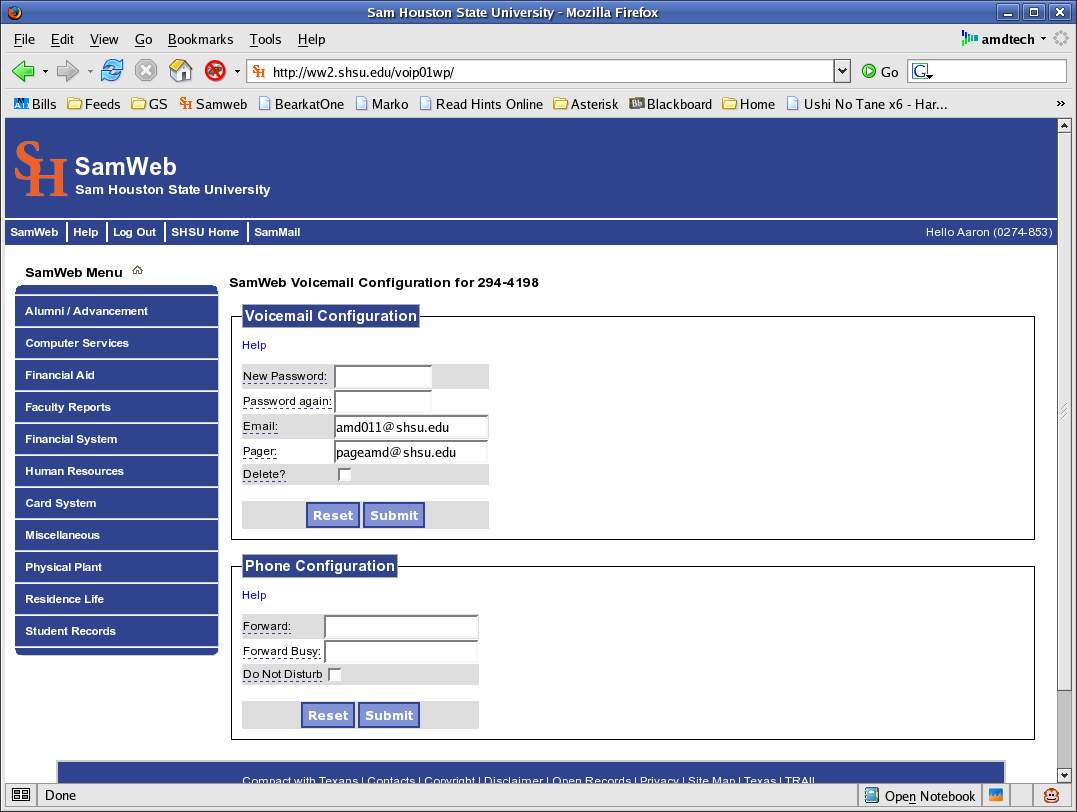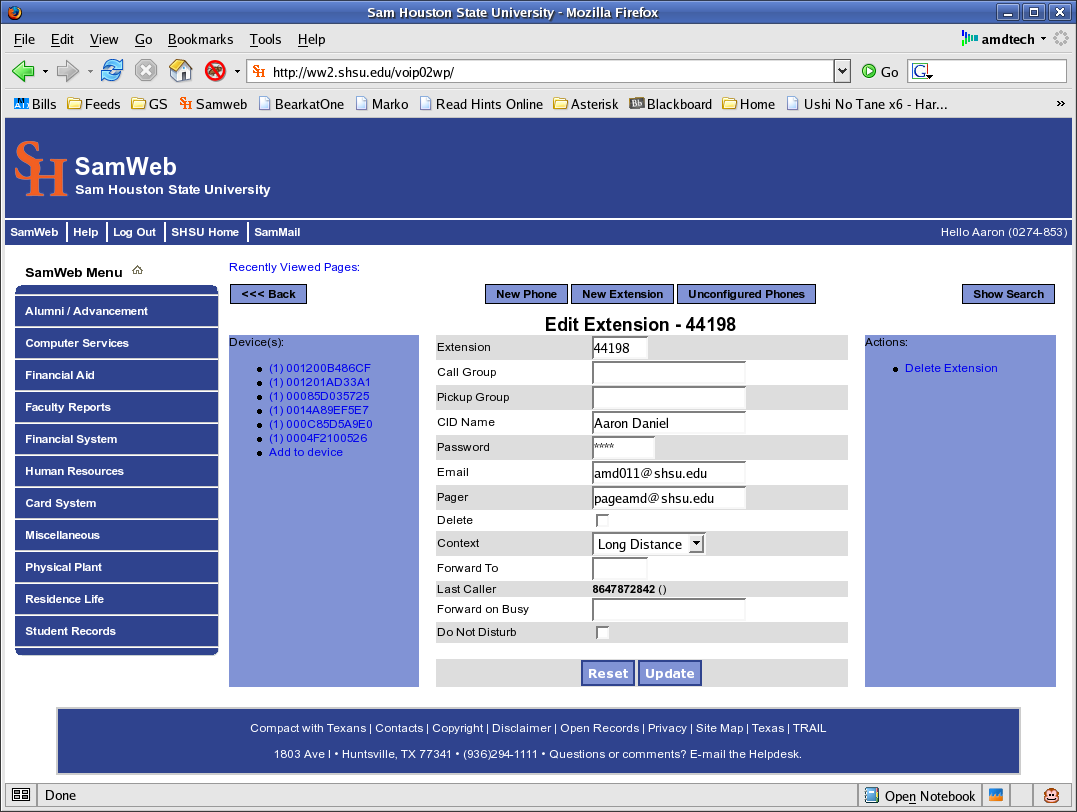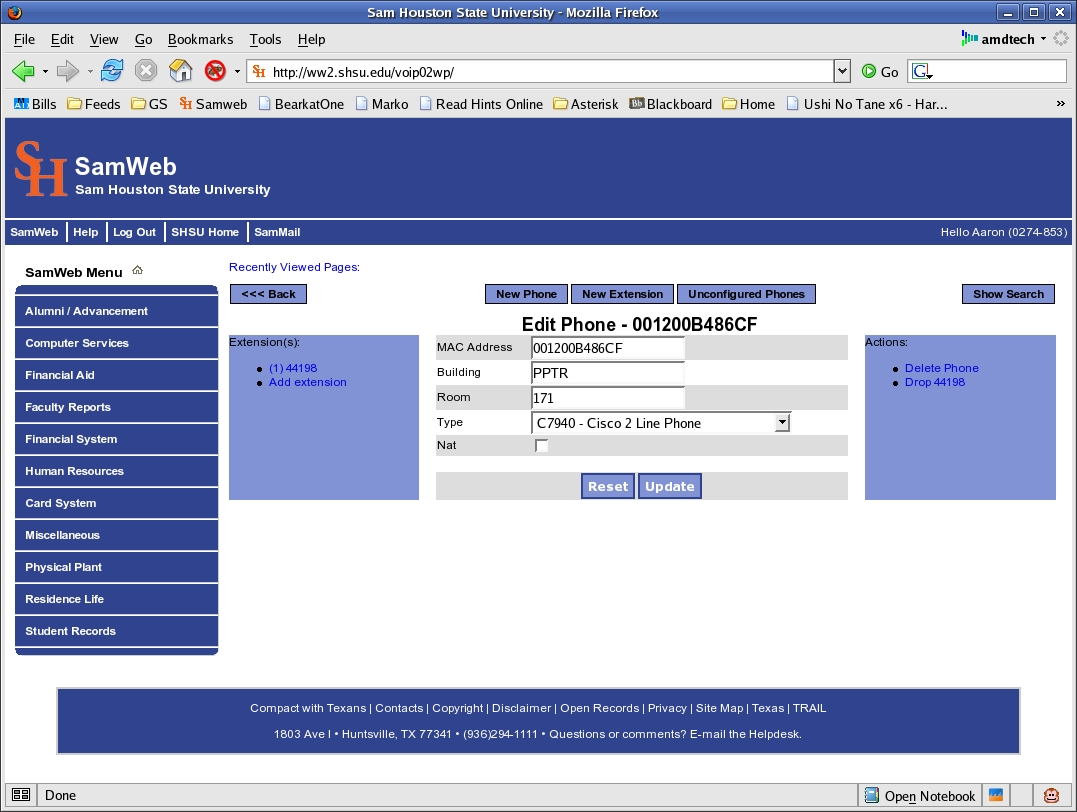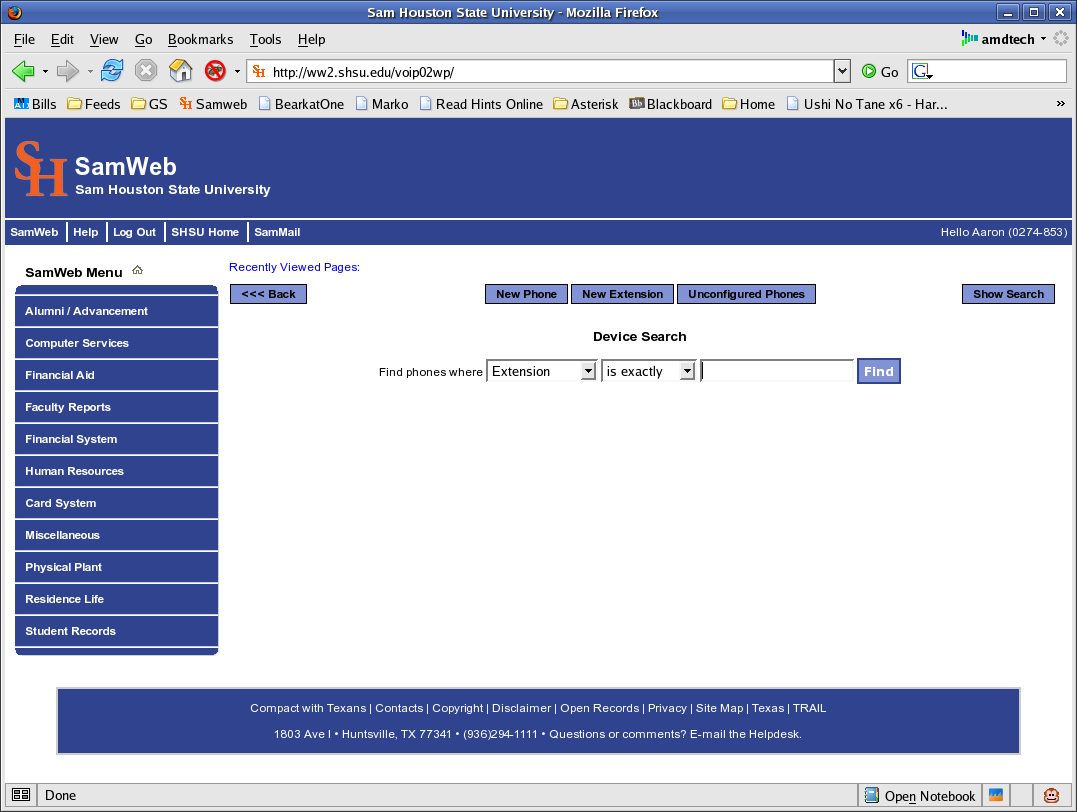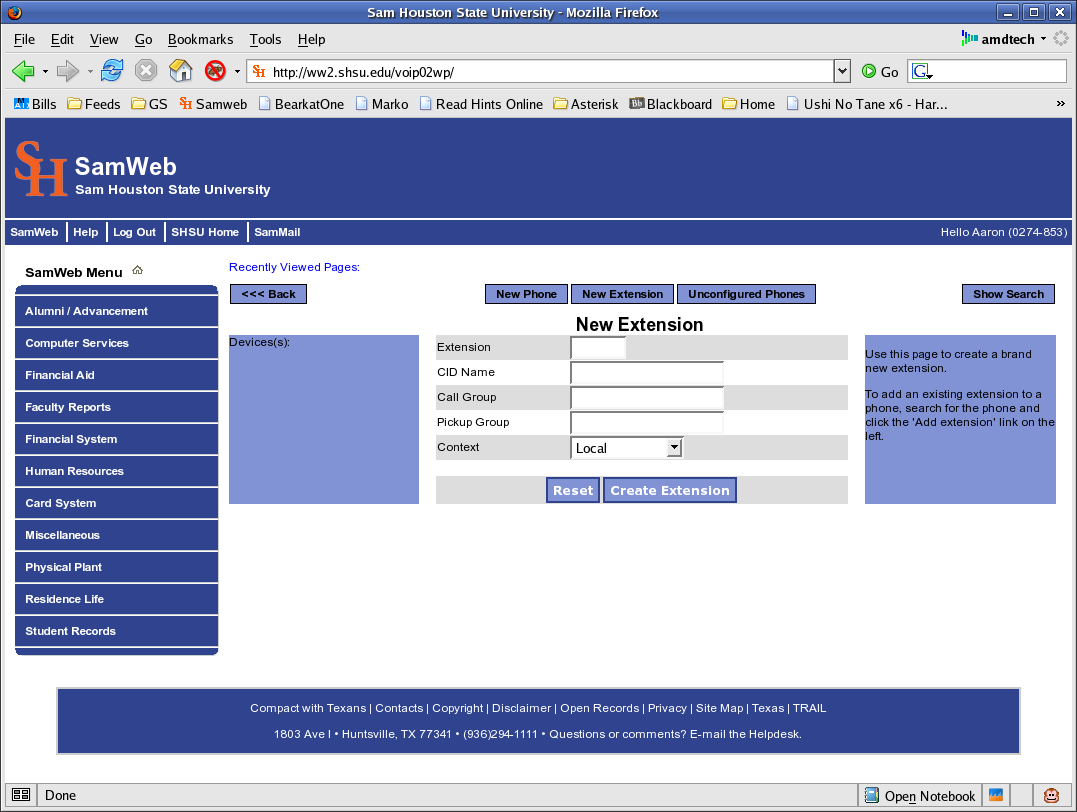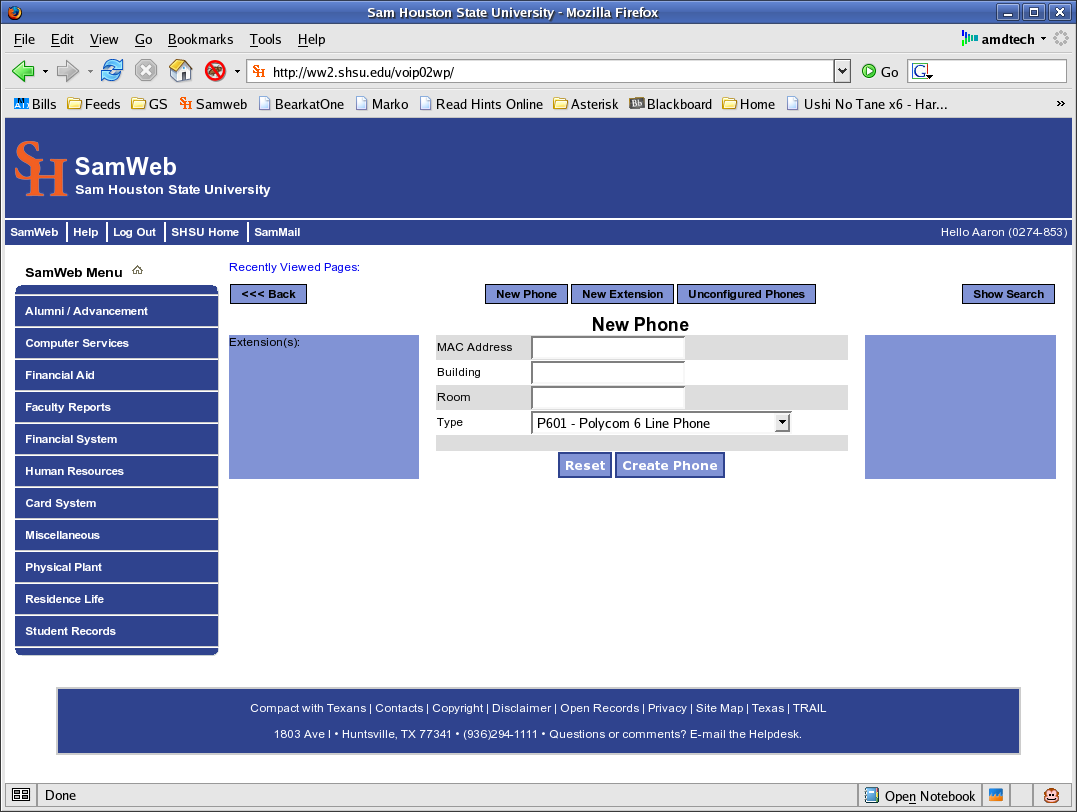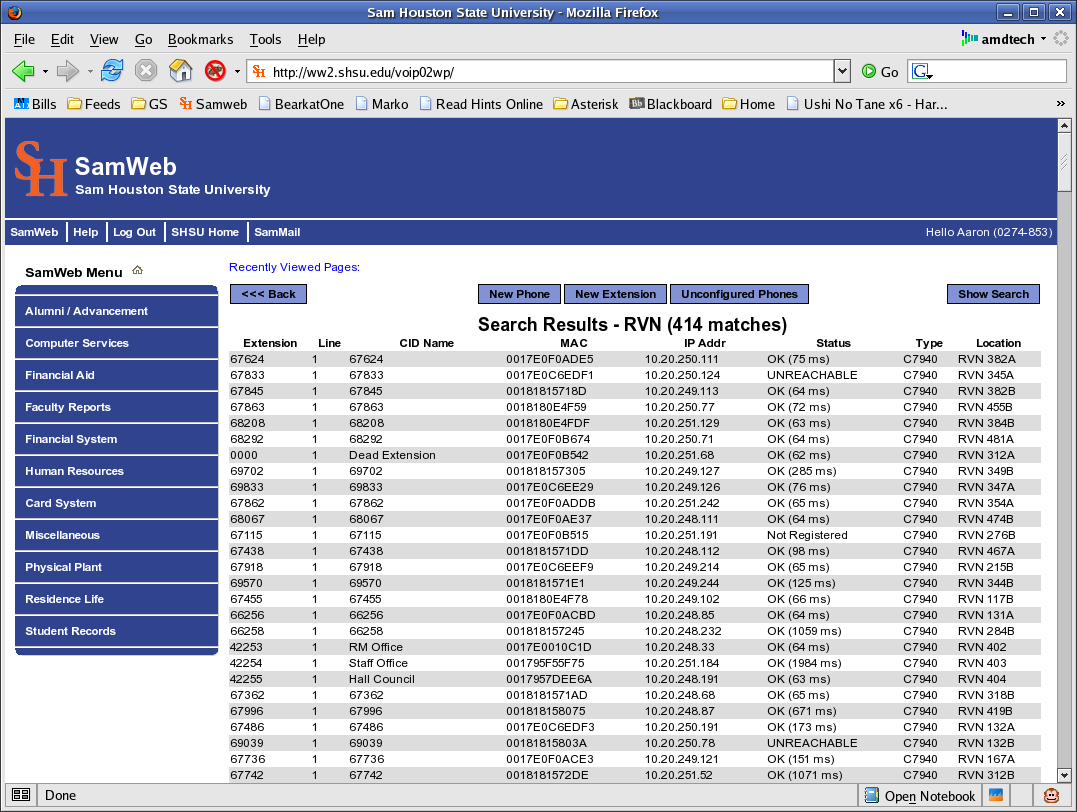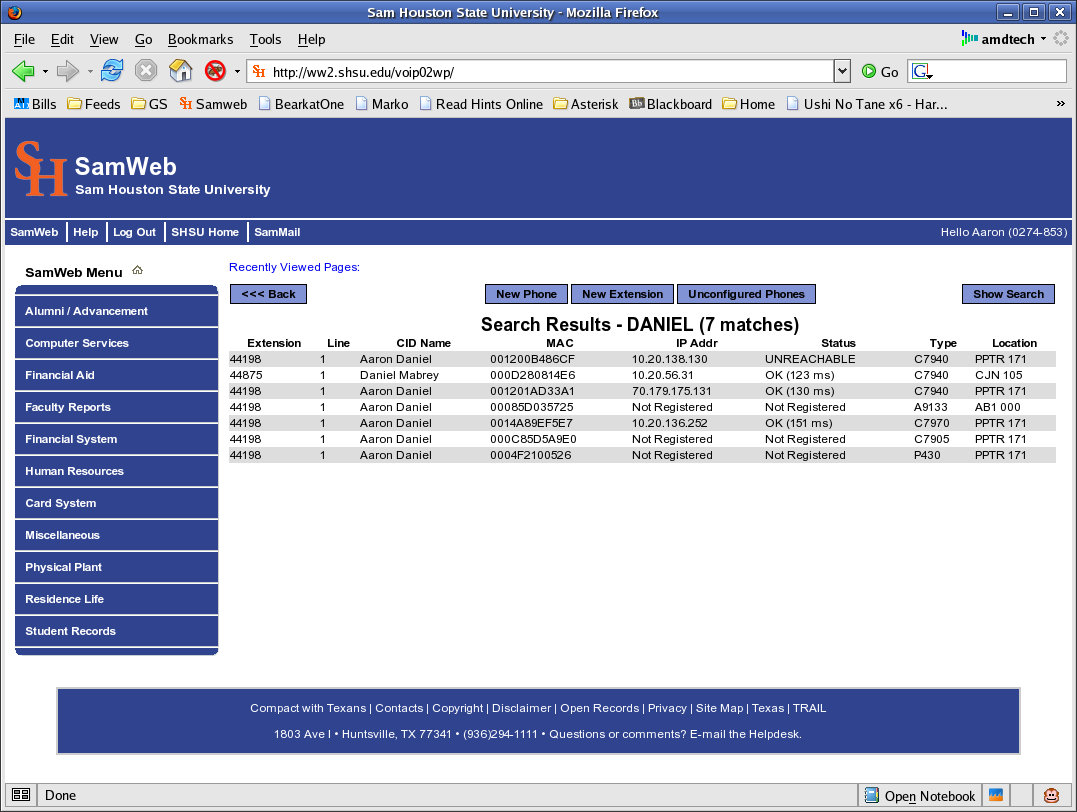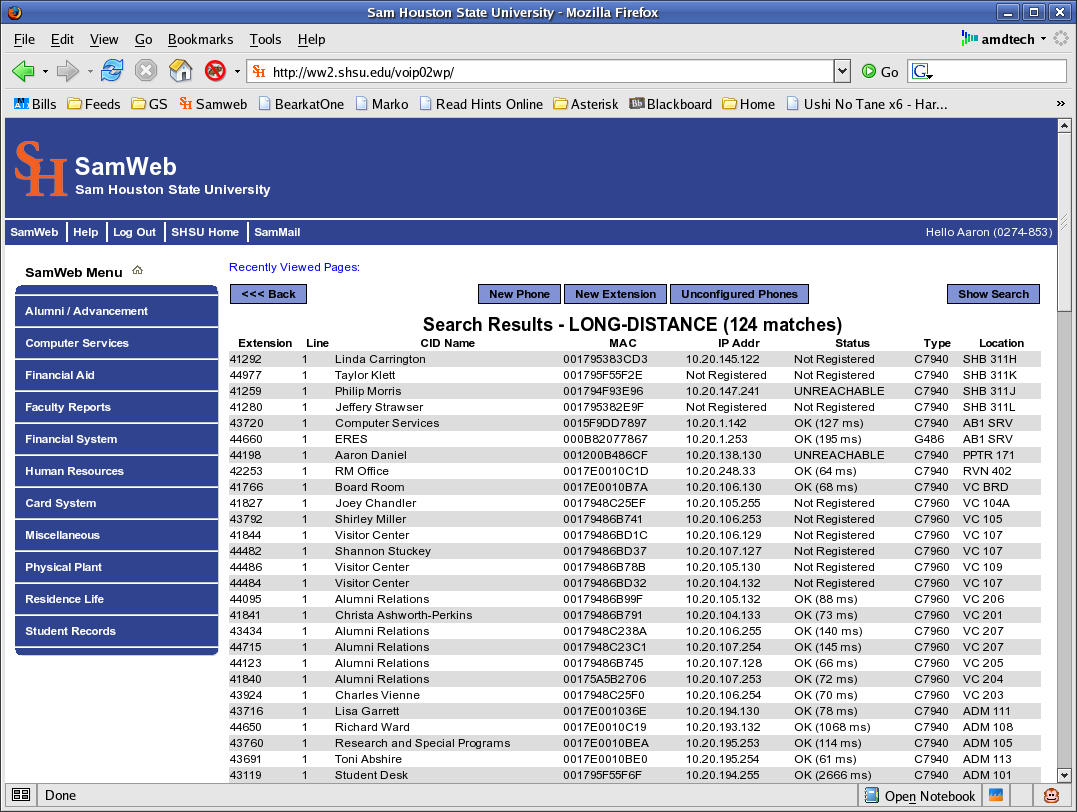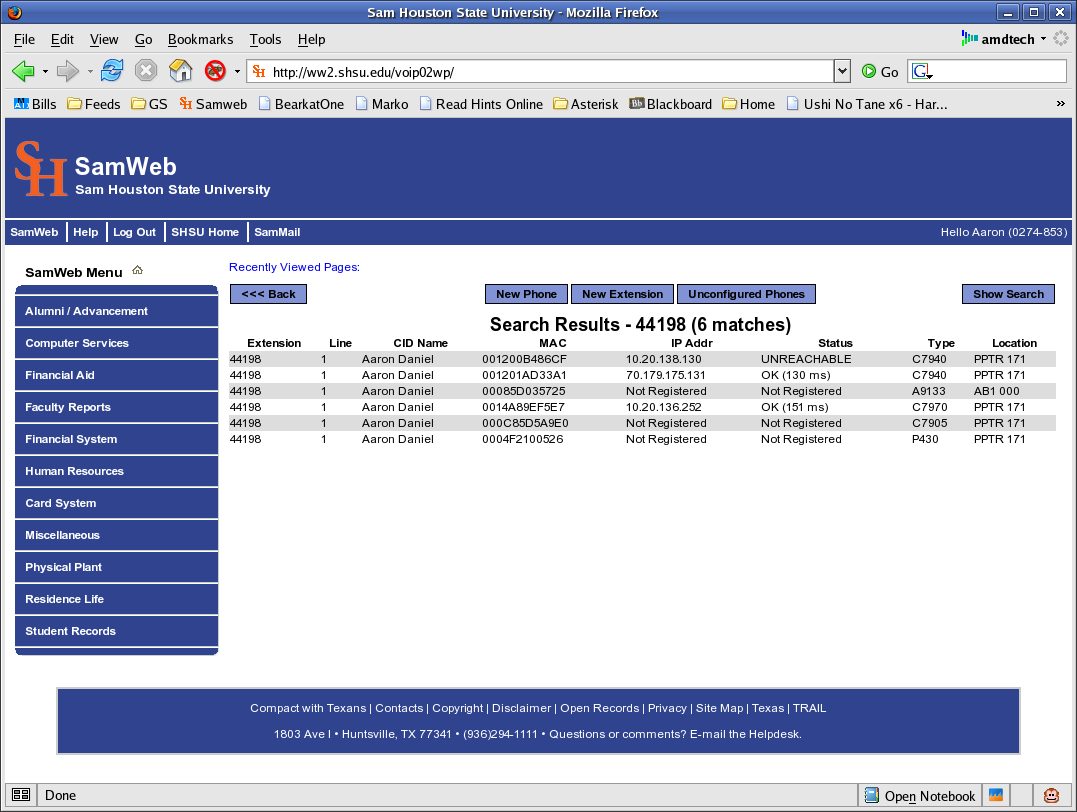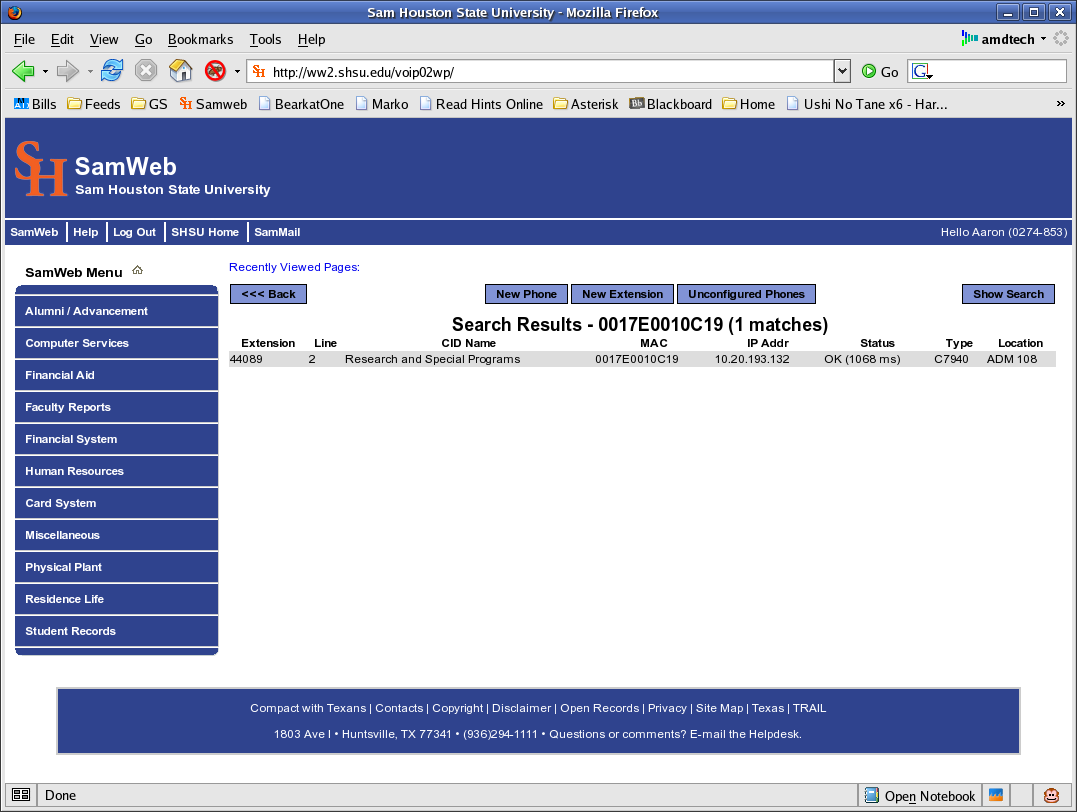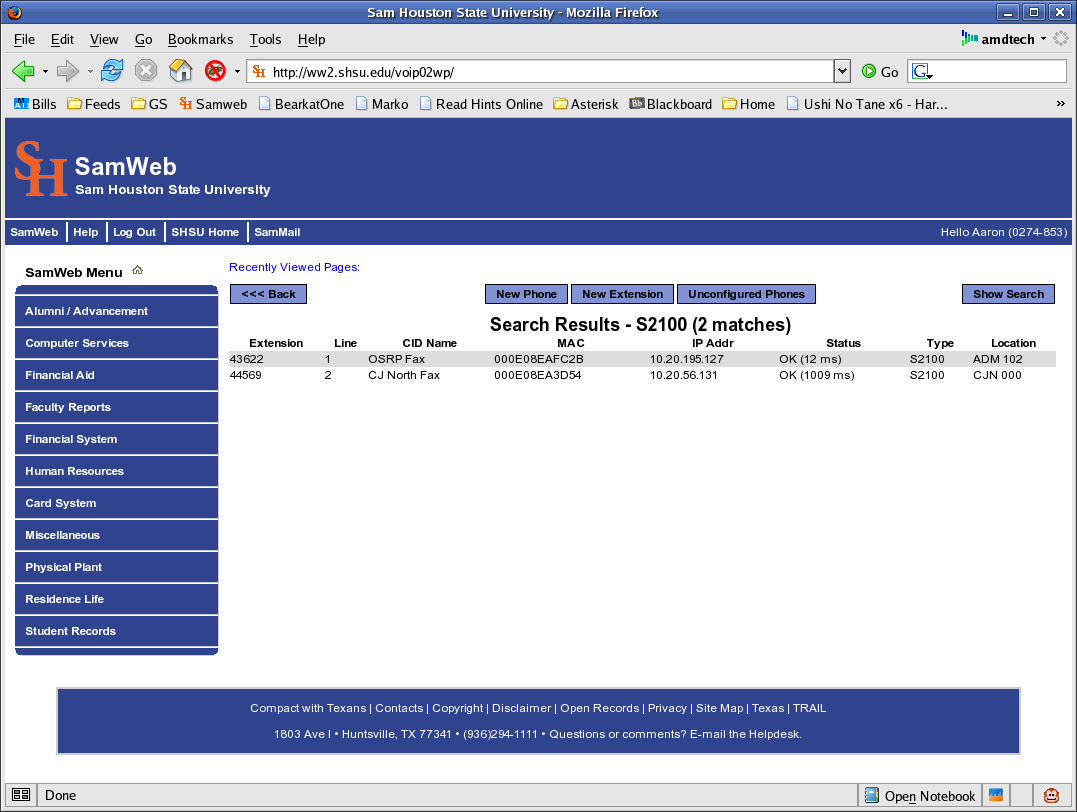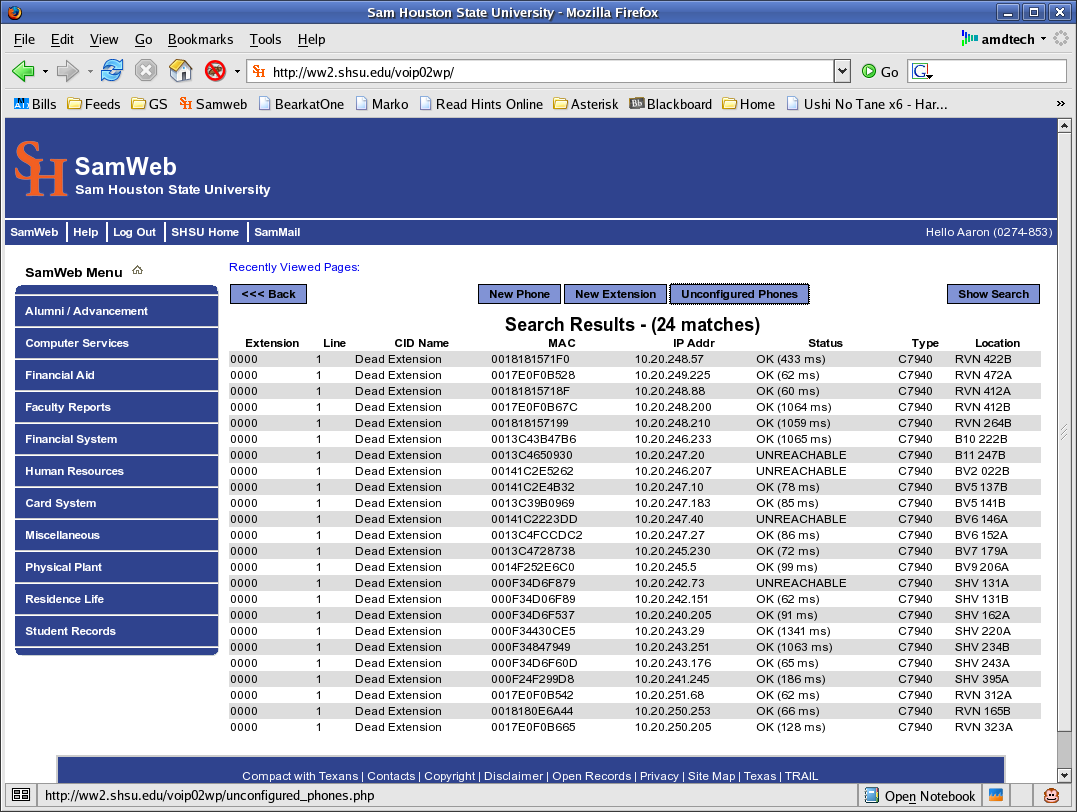wg-voip - VoIP SIG call notes - 10/12/2006
List archive
- From: Garret Yoshimi <>
- To: Internet2 VoIP SIG <>
- Cc: Aaron Daniel <>
- Subject: VoIP SIG call notes - 10/12/2006
- Date: Fri, 20 Oct 2006 08:11:01 -1000
VoIP SIG Conference Call, October 12th 2006
*Attendees
Dennis Baron, MIT
Tim Bastien, Penn State University
Les Boomgaarden, University of Minnesota
Alan Crosswell, Columbia
Aaron Daniel, Sam Houston State University (Special Guest Speaker)
Andy Elble, RIT
Todd Edwards, Wake Forest University
Louis Hammond, University of Minnesota
Candace Holman, Harvard
Rich Ingram, University of Minnesota
Richard Machita, University of Alaska
James Stormes, Cisco
Christian Schlatter, UNC
Ben Teitelbaum, Internet 2
Chris Trown, University of Oregon
Garret Yoshimi, Hawaii
(and others … sorry, didn’t quite get all the names)
*Discussion*
Today's call features Aaron Daniel discussing Sam Houston State University's recent experience migrating users to Asterisk. Asterisk was compared with Cisco's Call Manager, and was selected due to its lower long-term cost, community support, and open-source license. Call Manager featured a lower initial cost and more official support, but the long-term costs were higher and it would have run on a Windows 2000 platform only, which raised security concerns from SHSU staff. Asterisk, on the other hand, would run on their existing hardware with the operating system of their choosing. It did, however, take longer to implement and lacks the official support of Call Manager. They are also looking into getting an ISN and joining SIP.edu.
In terms of infrastructure, SHSH still uses Cisco for networking throughout campus. QOS is done in the switches, and the phones are isolated on their own network but have access to the outside world. They are running only one voicemail server, but multiple redundant gateway and call servers. The voicemail server handles conference calls and fax services, but is not redundant at the current time. All servers but one are Dells, and the duplicate gateways have Digium 412 and 407 4-port T1 cards. Cisco phones are used, and register with both servers at the same time for seamless failover. The T1 cards go through a Meridian system to the city T1 lines.
The current deployment consists of 1610 phones on the Asterisk system. There are about 6000 phones total, and this number will increase as more dorms are outfitted. Aaron says that they have had good experiences with their Cisco phones and have the provisioning down pat. They are looking at various infrastructure upgrades, more open source solutions, and bringing up cluster of database servers.
A question is asked about the Meridian system, and how it fits in with Asterisk. Aaron says that this is the legacy campus PBX system that they are looking to replace. It currently functions as a pass-through (to the PSTN) for Asterisk phones on campus. The phones on the Asterisk system connect to it with a T1, and internal calls are transferred between the Asterisk and Meridian systems. All external calls go through the Meridian.
Louis asks about the user interface for provisioning, specifically if there is any sort of a Web interface. Aaron says that he personally relies on the command line, but there is a Web interface available which allows help desk staff to modify configuration information. All configuration files as well as the dialplan are stored in a database, which Aaron does not touch unless he is adding or removing a server. Storing everything in a database allows more flexibility for provisioning and access through a Web interface.
Christian asks if SHSU is using the Asterisk real-time extension for SIP endpoints. Aaron says that they are, and it also handles replication between the call servers using a PG tool. Christian also asks about the database itself, which is PosgreSQL, and the QoS. Aaron says that they have a separate VLAN for phones and servers, and based on VLAN ID data traffic is given a higher priority than voice. Initially they had issues with voice quality but this has been remedied. They are using Cisco 7940s and have had no problems, and have not looked at the 7941s.
Dennis asks if the migration from Call Manager to Asterisk was done in stages or all at once. Aaron says that two dorms were using Call Manager, and each was switched over in one day during a time when students were not around. The final 500 users are in a new dorm which was set up with Asterisk from the beginning.
Louis asks if users are allowed to move the phones from place to place, and how this is handled for 911 service. Aaron says that users are not allowed to move phones, and they are a small university so 911 isn't much of a problem. All dorm numbers in their 911 database have a clause that operators must ask the caller where they are located (i.e by policy, 911 operators will ask the caller for location).
Tim from Penn State asks how they keep track of where the phones are located. Aaron says that the Cisco phones use CDP, and they are also notified from a Web database when phones have gone offline. They are also running a program called Net Disco on the server that performs an SNMP walk once a week and reports if a switch is out or a phone isn't working. Tim asks if there is any real-time update to a database for 911 information, and Aaron says that the campus police don't have any information about dorm phones, just that they must ask for a location on 911 calls. Tim mentions that Penn State locks MAC addresses to specific ports so phones won't work in other locations as a workaround until they can develop a better way to know where phones are located in real time.
Aaron is asked if any of the users depend on automatic call distribution, and if so, does Asterisk provide this? Aaron says that they are looking to do this on a separate application server, and their help desk is being moved to a queue system which will be integrated with a work order system.
Aaron says that some of the Asterisk converts are single lines, others are multiple lines. One user has two offices on campus, and calling this number will ring three phones. The front office of the visitor center has three lines. Aaron is asked about the level of the converts, and says that the aforementioned user with two offices is a dean. Reaction from users has been mixed; at first some departments complained about the new system and having to change their phones. However, the Asterisk voicemail-to-email feature is well received and there are more backend features available to the users, who see it not as the removal of features but as a replacement. Asterisk is able to email any voicemail to users, and SHSU has put patches in place to adjust the volume level and convert the sound files to MP3 for more flexibility.
The default is for the voicemail to remain on the server when it is emailed to the user, which can lead to duplication of messages. There is a Web interface to set it so the voicemail is deleted after being emailed, and Aaron says that most users do this which prevents the voicemail light from ever being lit on their phone. Garret mentions that Deke’s (UPenn) presentation at Educause mentioned an enhancement to make Asterisk voicemail IMAP capable to allow a single voice mail store accessible from phone or email. Aaron says that this is part of the 1.4 beta version of Asterisk. Tim wants to confirm that the email and voicemail server don't communicate with each other, that once email is sent the voicemail is deleted and there is no confirmation of deliver. Aaron confirms this, but says that a patch in Asterisk stores the voicemail for three months in case of any problem with the email server. As far as the user is concerned, the voicemail is deleted, but it can be recovered if absolutely necessary.
Aaron is asked about soft clients. They are testing various clients and hoping to deploy one soon. They are also looking to brand a student version of any soft client as they have done with their Jabber client, Pandion.
Christian asks if users are able to dial SIP URIs for IP-to-IP calls. Aaron says that they are unable to do this, and all calls pass through their servers. Their current phones make it difficult to dial URIs, and they would like to be able to track all calls for law enforcement purposes. Dennis asks if phones are configured with an outbound proxy to force calls to go through Asterisk. Aaron says that all the phones talk to the registration servers, and that the Cisco phones don't really do well with an outbound proxy.
Rich Ingram asks which codecs are in use at SHSU, and if there are any phones at the end of low bandwidth links. Aaron says that they are currently using G711u, and are looking at G729. Their servers have enough bandwidth but will eventually be limited by processing power. They have no low bandwidth issues. For trunking, they are using IAX, all internal traffic is SIP. Dennis asks what benefits IAX provides on the gateway side, and Aaron answers that it's because he was unable to get SIP working. He would like to use the same protocol but had problems with Vitelity and SIP, and was able to get IAX to work.
Garret asks about any contracts for upstream support or a maintenance agreement with Digium, for example. Aaron says that most support is in house. Candace is curious about situations where Aaron is unable to get help with a specific issue, particularly how long Aaron spends trying to fix something before dropping it. Aaron says that there are certain issues which simply must work, so he will spend as much time as necessary on them. Otherwise he will spend a day or two on a problem before stepping away for a while and testing it again after a break.
Garret is interested in other enhancements that have been made by SHSU to the Asterisk core or Web interface. Aaron says that they have developed a number of patches, such as the MP3 conversion. Another patch makes the emailed voicemail message appear to be from the person who left the message if that person is in the database, allowing users to reply directly by email. Another patch allows the SIP registration information to be separated out from the Asterisk updated information, allowing them to use a view to create the SIP peers table.
Les is curious about the Digium 412s and 407s. Aaron says that they're new; the 410s and 405s are the base cards while the 412s and 407s have an Octastic echo canceling card attached.
Dennis would like to see screenshots of the Web interface, which Aaron will provide. <Attachments in this distribution>
Garret asks if Aaron would be willing to share any of the enhancements to Asterisk. Aaron says that the volume patch is already in version 1.4, and he's willing to post any other patches if people are interested. He also discusses the schedule for the remaining phones. They currently have about 300 phones to migrate off of Call Manager, and have about a year and a half to migrate off of the Meridian this as their building is set to be demolished after this.
Cisco's new licensing terms are mentioned, where their phones are only licensed for use with Call Manager. Aaron says that this will prompt them to look to other vendors. Christian thinks that this might be a technical and not simply a license issue, as he noticed strange Cisco SIP traffic during network monitoring.
Christian asks about load testing, Aaron says that SHSU has tested about 100 concurrent calls on their older server, which was a dual 1Ghz machine. The new servers are faster, with more bandwidth, and he does not anticipate any problems.
Garret asks about network monitoring and quality probing. Aaron says that Asterisk gives plenty off error messages, and when he gets a call about an issue he usually already knows about it. As for quality probing, he does sample testing every once in a while. His systems are monitored by Nagios, with operators available at night if something goes wrong.
Aaron has not yet tested video over any soft clients, but will be doing this soon. He also mentions that for conversion issues, he has a person available who talks to departments about changes with the phone system.
It is pointed out that with a year and half to convert 4000 phones, this amounts to an average of about 50 per week. Aaron says that the dorms are not a real problem due to the centralization of infrastructure and the small size of some of the dorms. He tries to convert faculty and staff as they move to new buildings, and doesn't feel that he will have problems with the time frame. Garret asks if there are separate drops for voice and data, and Aaron says that there is only one drop for both; in dorm rooms and offices the computers will plug into the phones.
Finally, Tim asks about SPIT, or voicemail spam, and any efforts taken to prevent this. Aaron says that they do not allow cross traffic from the data to voice networks, and is not overly concerned about this sort of spam. He is unsure if Asterisk has any facilities to prevent this or lock out obvious spam attempts.
Thanks once again to Aaron Daniel for sharing his experiences with the group. Several folks also asked about follow-up conversations with Aaron; he can be reached at . Best of luck to Aaron as he works to complete his full campus Asterisk deployment!
- VoIP SIG call notes - 10/12/2006, Garret Yoshimi, 10/20/2006
Archive powered by MHonArc 2.6.16.
